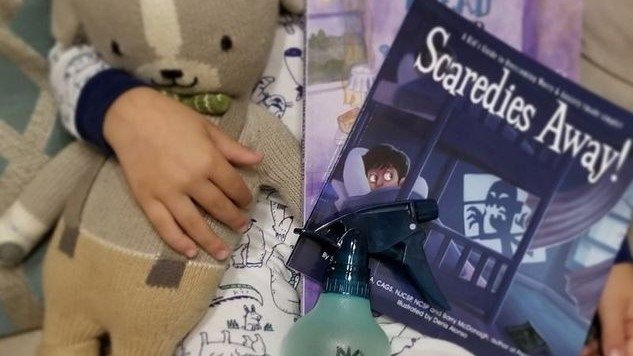How to Help Your Child With Night-Time Worry
For over a decade, I have been helping children overcome worry, anxiety and fears. When my son developed his own fear of “a green guy in his room at night” I knew I had to arm him with the arsenal I had created over the years.
The first thing I want parents to know about bedtime anxiety in preschool-aged children is that some degree of it is completely normal and, in fact, developmentally appropriate. At this age, children’s imaginations are running wild. We encourage this behavior by asking them to play pretend and reading them fairytales because we’re working to foster their creative, cognitive, problem-solving and social skills. When we couple that with the development of an increased sense of danger around this age, children naturally start thinking about the possibility of bad guys and monsters. Additionally, at this age, children are taking greater leaps away from their parents. As they enter preschool or naturally engage in more independent activities, they may start to realize how big and scary the world might be and how vulnerable the world is. All of this can combine into the perfect storm of bedtime worry.
As a mom, I can understand the need to protect our children and the discomfort we feel when our children experience any kind of discomfort or pain. As a therapist, I know the importance of adversity and the growth and strength that come from working through a problem. So this issue of bedtime worry often becomes one of the first encounters of a problem a child has that their parents cannot simply solve for them, but instead can help the child learn ways to cope with the problem. We can’t make the monsters go away, we have to teach our children ways to protect themselves from the monsters.
I’m going to start with what not to do: Don’t tell your child that they’re big brave kid who shouldn’t be worried. All this does is give them another thing to worry about, the fact that they are not as brave as you think they are.
The second thing you should not say is: “Monsters aren’t real”. The same strong imagination that allows your kid to believe in Santa or Mickey Mouse as a real entity is the same mechanism in play that makes monsters very real to your child. You have to get on their level if you’re going to start to help. By validating their fears “I know that must feel so scary” you can make a connection that will help your child feel less alone and more able to trust that you can help.
So now we start with what is helpful to a child in this developmental stage, and that is the same thing that created the problem in the first place: their imagination. I like to help kids imagine a superhero that will protect them from the green guy, we’ll draw it and talk about their super powers, and now the superhero becomes just as powerful as the monster in their world view. Another protective tactic is to line up stuffed animals as a line of defense. I always arm these children with “no monster spray” (a spray bottle with some magic water). We talk about how spraying this magic potion while we say “go away monster” makes it impossible for a monster to enter our room.
I like to share some of my favorite books about the topic with kids experiencing night time worry. These are a combination of stories to help a child feel not alone in their experience as well as books that teach simple yet effective coping skills. Links to some of my favorites are below.
Typically, it takes a few nights to a few weeks of practicing these rituals to create such a sense of safety that a child will no longer be bothered by their bedtime fears, so much so that not only do they no longer need the ritual but they forget about the fear altogether. When this anxiety persists or consumes a lot of your child’s day, a great child therapist can be really helpful in working through this problem in a safe and efficient way through play therapy, usually on a short term basis.

